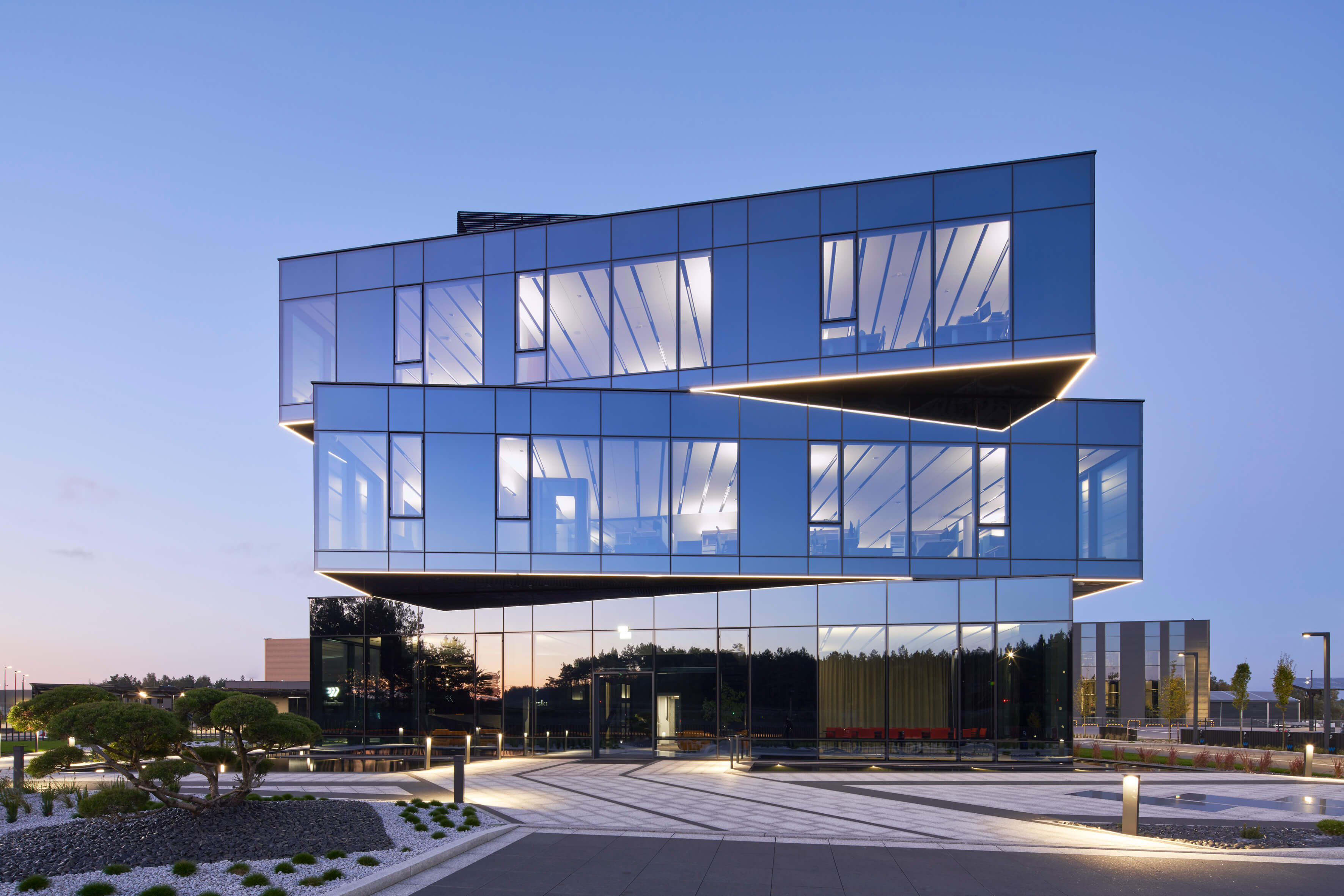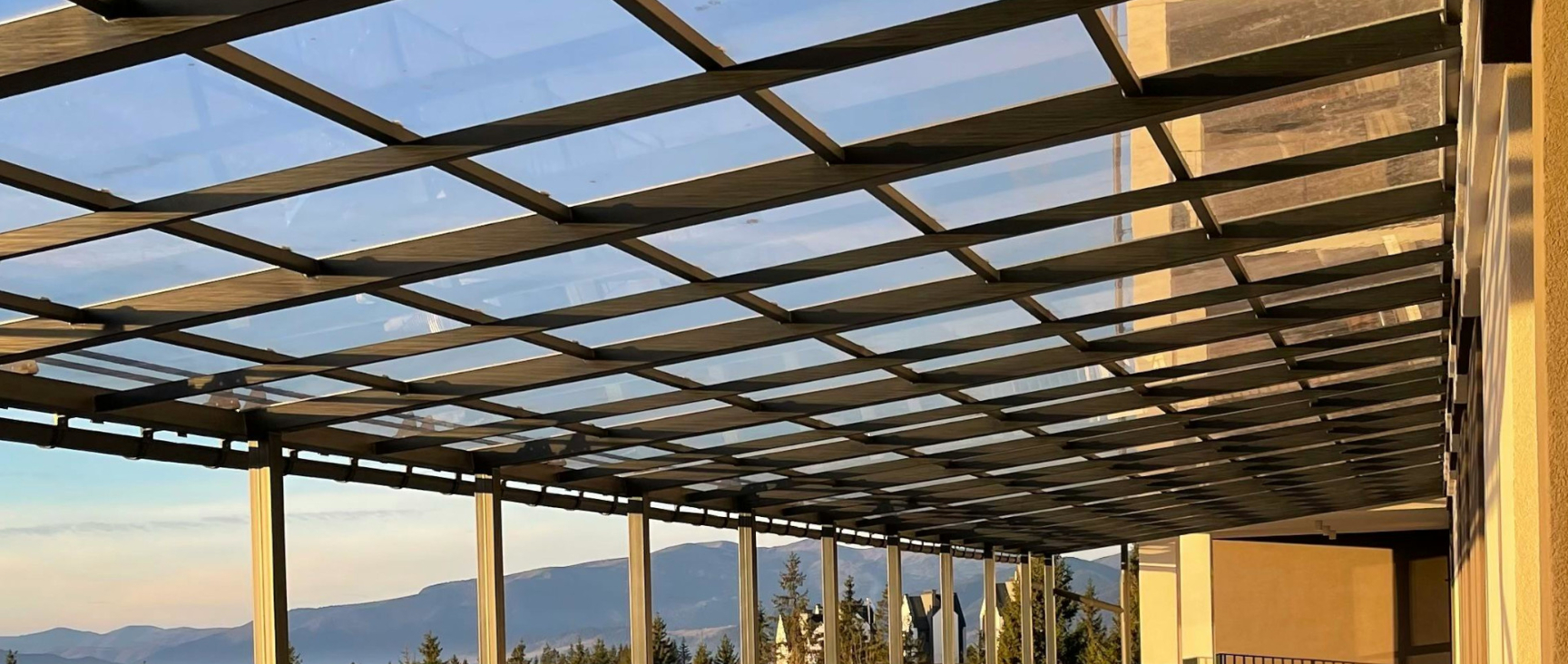Information

What kind of glass is suitable for a glass canopy? Let us guide you!
A glass canopy over the door is not only a practical protection against rain, snow, and sun. It is also an element that affects the appearance of the façade and the perception of the entire building. Investors considering such a solution often wonder what type of glass will be suitable for a glass canopy in a given case. The choice should not be random – the type of glass determines the durability of the structure, its safety and suitability for the installation conditions. In this article, you will learn what to look for when choosing glass, how to match its thickness to the technical parameters of the canopy, and when to consider using tempered glass or laminated glass. We encourage you to read on – a well-considered decision translates into safety and long-term durability.
What kind of glass is suitable for glass canopies? Glass types and their properties
There are three main types of glass used for canopy construction on the market.
Tempered glass (ESG) – produced by heating to a high temperature and then rapidly cooling. This makes it much more resistant to mechanical damage and temperature changes than standard glass. If it breaks, it shatters into small, blunt fragments. This mechanism increases user safety by minimising the risk of injury.
Laminated glass (VSG) – consists of at least two panes joined by PVB film. When damaged, the glass fragments remain bonded to the interlayer, which prevents them from falling. This solution is used in places where protection against the effects of glass breakage is important.
Laminated tempered glass (VSG ESG) – combines the advantages of both technologies. The glass panes are first tempered and then laminated. The result is a material that is highly resistant to loads and at the same time neutralises the effects of any cracks.
Which glass is better: laminated tempered, tempered, or laminated type?
The choice of a specific type of glass depends on the technical requirements and installation location. If the canopy is to be located above a small entrance and is not exposed to heavy rainfall or strong winds, tempered glass will suffice. It is distinguished by high mechanical resistance and increased safety in the event of damage. Laminated glass works well where protection against the effects of possible breakage is a priority – for example, above the entrance to a residential building, where the space under the canopy is often frequented. A specialist film holds the pieces of glass in place, reducing the risk of falling of the fragments. For structures with a larger span, higher load or located in mountainous and coastal areas, laminated toughened glass is the most sensible choice. It combines impact resistance with full protection against falling fragments. This solution is also preferred in public construction, where stricter standards apply.
How to choose the thickness of glass for a canopy?
The thickness of the glass is not arbitrary – it must correspond to both the loads and the dimensions of the canopy itself. First of all, the weight of the material, wind load, snow accumulation, and possible point loads during servicing must be taken into account. The type of glass also influences the choice of thickness. A laminated pane of the same thickness as tempered glass has a different load-bearing capacity and different deflection parameters. Therefore, the type of material is determined first, and only then its dimensions.
Location and exposure – the key to choosing the right glass type
In areas with intense sunlight, it is worth considering coated glass, which protects the entrance area from overheating and at the same time reduces the impact of radiation on the façade and nearby equipment. In areas with heavy snowfall, the priority is the resistance of the panes to variable loads – not only their weight, but also the way they are distributed on the surface of the canopy may require the use of thicker glass or increased spacing between support points.
Glass colour – just aesthetics or something more?
The colour affects not only the appearance but also the performance of the canopy. A transparent pane does not restrict daylight access – it is used where natural lighting is important. For southern exposure and areas prone to heat, it’s worth considering solid-coloured glass.
Properties of the most commonly used glass colours:
- transparent – transmits the most light, visually neutral,
- grey, brown, graphite – these colours reduce the amount of heat and light as well as improve thermal comfort,
- green, blue – these colours add a calmer, cooler tone to the entrance area,
- frosted, milky – these colours obscure the view from the outside and allow you to maintain privacy.
The choice of glass colour should be adapted to the function of the space and its cardinal orientation. In residential buildings, frosted glass canopies work well at entrances directly adjacent to living room or kitchen windows. Brown or grey, on the other hand, are more often chosen for commercial buildings and modern façade designs with large amounts of glazing.
What else should be considered when designing a canopy?
In addition to the choice of glass itself, technical and legal issues are also important. The required static calculations must take into account the forces acting on the entire structure, the method of fastening and the spacing between the supports. In many design projects, it is worth planning the use of ‘custom-made’ glass – tailored not only to technical requirements, but also to appearance. Finishing elements, such as slings, fittings, and seals, also affect the final appearance and durability of the canopy. In the case of public buildings and design projects subject to OHS requirements, the design must meet specific regulatory conditions. For this reason, it is recommended to work with a glass structure engineer as early as the concept stage.
The selection of glass for a canopy requires consideration of the type of material, its thickness, the installation location and the requirements resulting from the regulations and safety. Tempered glass works well for smaller structures. Laminated glass increases safety in high-traffic areas. Laminated tempered glass, on the other hand, is used where resistance to loads and intensive use is important. The choice of colour should not only complement the appearance of the façade, but also the users’ comfort. Before deciding on a specific option, it is worth analysing the entire design project – from dimensions and location conditions to the method of installation. Only then can you be sure that the structure will be durable and safe for many years to come.
Do you want to ensure that your glass canopy is sturdy, compliant with regulations, and perfectly suited to the surroundings? Contact WUTKOWSKI – we will help you choose the right type of glass, carry out a technical analysis, and propose solutions proven in practice.
